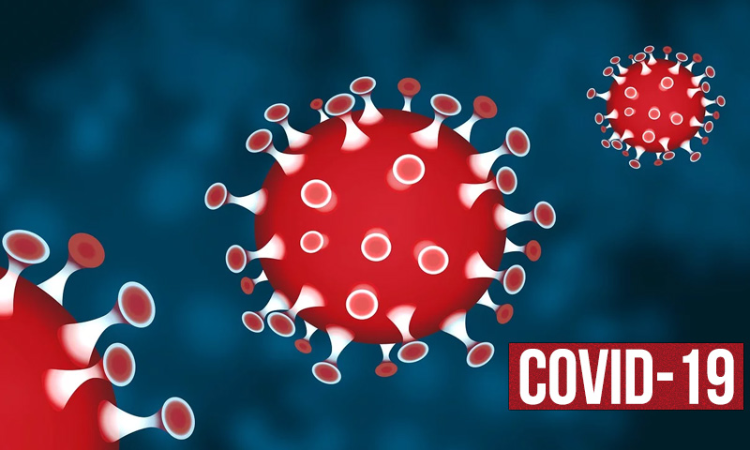
The Centers for Disease Control and Prevention (CDC) have released updated guidelines to help safeguard people and communities from the virus as the COVID-19 pandemic continues to evolve. These recommendations, which are grounded in the most recent scientific data, are meant to slow the COVID-19 virus’s spread while facilitating a return to regular activities. What you need know about the 2024 COVID-19 guidelines from the CDC is provided here.
Contents
1. Vaccination
For everyone five years of age and older, the CDC still advises getting vaccinated against COVID-19. The best defense against COVID-19 is vaccination, which can save serious disease, hospital stays, and even death. For some groups, booster dosages are also advised in order to sustain viral protection.
2. Masking
The degree of COVID-19 transmission in communities has influenced the evolution of masking suggestions. It is not required for vaccinated individuals to wear masks in areas with low or moderate transmission. Regardless of immunization status, the CDC advises wearing masks in indoor public settings when there is a significant or high transmission.
3. Testing
The Centers for Disease Control and Prevention (CDC) advises COVID-19 testing for those who exhibit COVID-19 symptoms, have come into contact with an infected person, or are in a high-risk environment like a hospital or communal living arrangement. Testing assists in early case detection and stops the virus from spreading further.
4. Travel
A guide to safe travel during the COVID-19 pandemic is provided by the CDC. This covers advice on testing before to and following travel, donning masks when using public transit, and adhering to regional travel laws and regulations.
5. Quarantine and Isolation
The CDC offers advice for isolation and quarantine in an effort to stop the COVID-19 virus from spreading. For those who have been exposed to COVID-19, quarantine is advised; for those who have tested positive for the virus, isolation is advised. The duration of isolation and quarantine may change depending on the specifics of each case and regional regulations.
6. Workplace Safety
During the COVID-19 epidemic, the CDC offers advice to businesses and workers on how to maintain workplace safety. This covers guidelines for wearing masks, keeping one’s distance from others physically, and getting vaccinated at work.
7. Community Mitigation Strategies
The CDC suggests community-based mitigating techniques to slow the COVID-19 pandemic. This entails encouraging immunization, donning masks in enclosed public areas, keeping a physical distance from others, and enhancing interior ventilation.
Conclusion
The goal of the CDC’s COVID-19 guidelines for 2024 is to safeguard people and communities against the virus by using the most recent scientific data. You can lessen the COVID-19 virus’s spread and keep yourself and others safe from serious illness by adhering to these recommendations. Keep up with the most recent recommendations and guidelines from the CDC to ensure your safety throughout the pandemic.
Frequently Asked Questions About the CDC’s COVID-19 Guidelines 2024
Q: What are the key changes in the CDC’s COVID-19 guidelines for 2024?
A: The CDC’s updated recommendations on immunization, testing, and masking are among the main modifications in its guidelines for 2024. For those who have received vaccinations, masking is now advised in areas with significant or high transmission but optional in areas with low or moderate transmission. For some populations, booster doses are also advised.
Q: Who should get vaccinated against COVID-19?
A: Starting at age 5, the CDC advises all individuals to get vaccinated against COVID-19. Those who are more likely to experience a serious illness from COVID-19, such as older folks and those with underlying medical issues, should get vaccinated.
Q: Do I still need to wear a mask if I’m fully vaccinated?
A: For those who have received all recommended vaccinations, masking is unnecessary in areas with low or moderate transmission. Regardless of immunization status, the CDC advises wearing masks in indoor public settings when there is a significant or high transmission.
Q: When should I get tested for COVID-19?
A: If you exhibit COVID-19 symptoms, have come into contact with someone who has the virus, or are in a high-risk environment like a hospital or communal housing arrangement, you should get tested for the virus.
Q: What should I do if I test positive for COVID-19?
A: To stop the virus from spreading further, you should separate yourself from people if you test positive for COVID-19. Observe the CDC’s isolation recommendations, which may differ according on personal circumstances and regional recommendations.
Q: Can I travel safely during the COVID-19 pandemic?
A: During the COVID-19 pandemic, the CDC offers advice on safe travel, which includes taking tests before and after travel, donning masks when using public transportation, and adhering to regional travel limitations and guidelines.
Q: How can I protect myself and others from COVID-19?
A: The CDC advises getting vaccinated against COVID-19, wearing masks in indoor public spaces in areas with substantial or high transmission, using physical distance, and routinely washing your hands in order to protect both yourself and others.
Q: Where can I find more information about the CDC’s COVID-19 guidelines?
A: The CDC website or talking to medical experts can provide you with further details regarding the COVID-19 guidelines. Keep up with the most recent advice and guidelines for protecting others from COVID-19 as well as yourself.